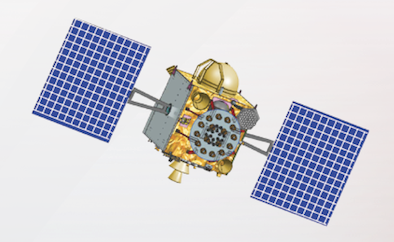What happens if a clock doesn't work? No problem, throw it away and buy a new one, and you hope you don't oversleep. But what happens if a clock fails in space? An atomic clock? All three atomic clocks on a navigation satellite is not good, but that's what has happened to India's IRNSS-1A satellite, and now it is necessary to send up a replacement satellite to remedy the situation.

Artist's concept of the IRNSS 1A satellite. Credit: ISRO
India will launch one of its back-up navigation satellites this year as a replacement to IRNSS-1A satellite, whose three atomic clocks have failed, an official of the Indian space agency said on Monday.
The official denied the existence of similar problems with the rubidium atomic clocks in another navigation satellite.
"The atomic clocks have failed in only one satellite. We will be launching the stand-by satellite this year. All other six satellites are operational and are providing the navigation data," A.S. Kiran Kumar, Chairman, Indian Space Research Organization (ISRO), told IANS.
He said the atomic clocks were imported and ISRO would take up the issue with the foreign supplier.
Each satellite has three clocks and a total of 27 clocks for the navigation satellite system were supplied by the same vendor. The clocks are important to provide precise data.
Simply put, the Indian Regional Navigation Satellite System (IRNSS) is similar to the GPS (Global Positioning System) of the US, Glonass of Russia and Galileo of Europe as well as China's Beidou.
While GPS and Glonass are fully functional global systems, the Chinese and the Japanese systems offer regional coverage and Europe's Galileo is yet to be operational.
According to Indian space agency, the applications of IRNSS are: terrestrial, aerial and marine navigation, vehicle tracking and fleet management, terrestrial navigation for hikers and travellers, disaster management, integration with mobile phones, mapping and geodetic data capture and visual and voice navigation for drivers.
In other words, IRNSS could be said to be the "Indian GPS". Apart from the civilian applications, the IRNSS will be used for defense purposes as well.
Kumar said ISRO was studying the problem, when queried whether the issue was with the electronic side of the clocks.
The Rs. 1,420 crore Indian satellite navigation system NavIC consists of seven satellites in orbit and two as substitutes.
Starting in July 2013, the Indian space agency has launched all the seven navigation satellites. The last one was launched on April 28, 2016. Each satellite has a life span of 10 years.
It is learnt that the NavIC satellites were performing well until the three clocks in IRNSS-1A - the first satellite - failed.
According to Kumar, all the hardware are susceptible to failure even though elaborate testing is done. Industry officials told IANS navigation satellites of other countries, too, have faced atomic clock problems.

